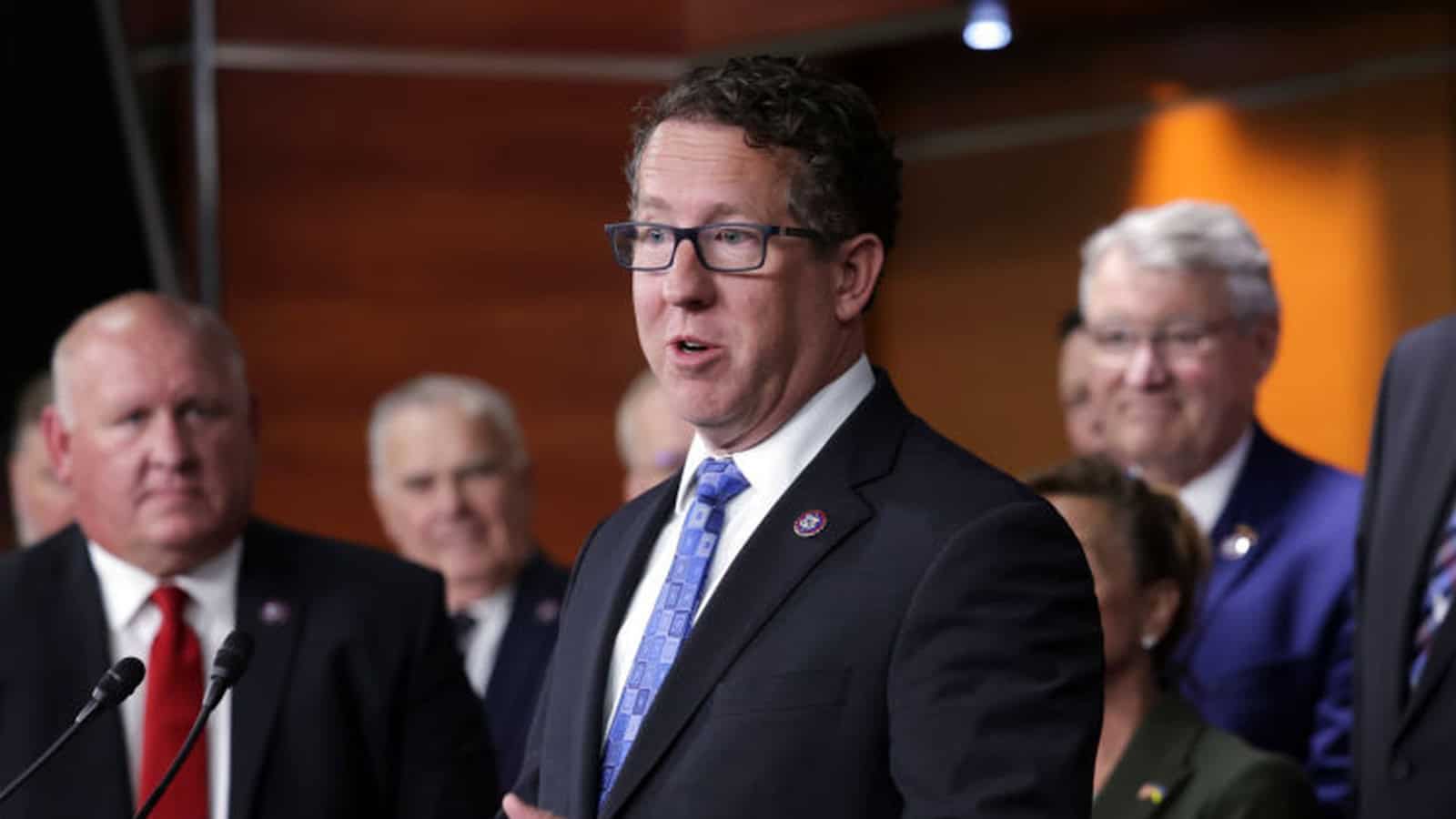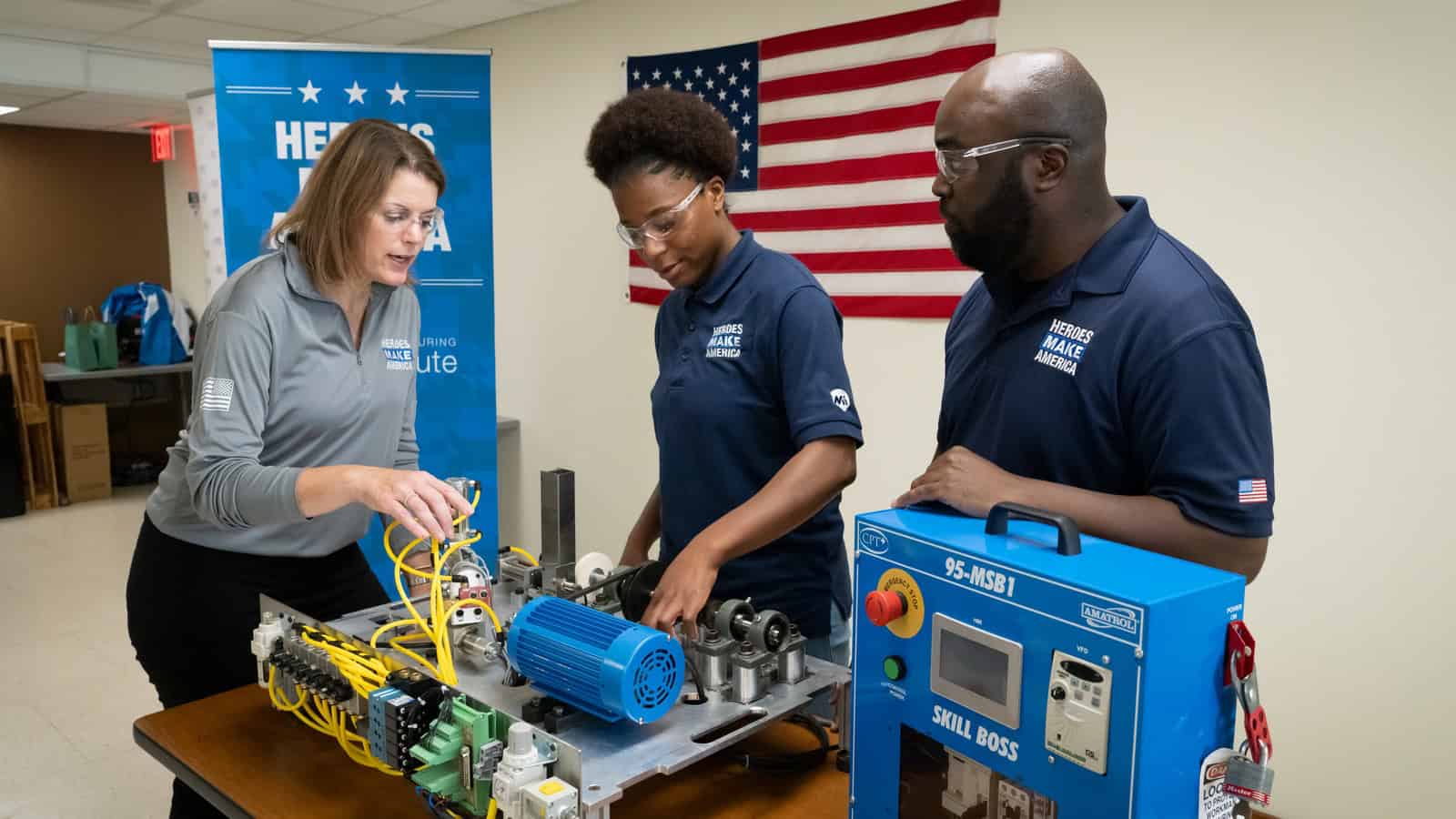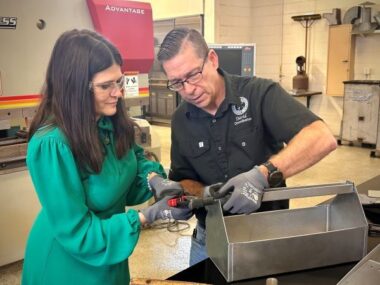Unemployment Holds Steady as Payroll Growth and Participation Dip
Nonfarm payroll employment increased by a measly 12,000 in October, impacted by Hurricanes Helene and Milton and strike activity. August and September job gains were also revised downward by 112,000 jobs. The 12-month average stands at 181,000 job gains per month. Manufacturing employment, however, declined by 46,000, largely influenced by the Boeing strike. In addition, August and September manufacturing job losses were revised downward by 2,000. The unemployment rate stayed the same at 4.1%, while the labor force participation rate dipped 0.1% to 62.6%.
The employment-population ratio fell slightly to 60.0% and is down 0.3 percentage points from a year ago. Employed persons who are part-time workers for economic reasons decreased by 67,000 to 4.56 million but are up from 4.28 million in October 2023. Native born employment is up over the month but down 773,000 over the year. Meanwhile, foreign born employment is down over the month but up 1,034,000 over the year.
Average hourly earnings for all private nonfarm payroll employees rose 0.4%, or 13 cents, reaching $35.46. Over the past year, earnings have grown 4.0%. The average workweek for all employees remained at 34.3 hours in October.
Q&A: Rep. Smith on Averting “Tax Armageddon”

The NAM recently interviewed Rep. Adrian Smith (R-NE) about the actions that he and congressional colleagues are taking to fight a looming “Tax Armageddon.” The full text is below.
NAM: Rep. Smith, Congress is facing a “Tax Armageddon” next year, as crucial provisions from 2017’s Tax Cuts and Jobs Act are set to expire. As a member of the House Ways and Means Committee, what is your focus moving into next year’s debate?
Smith: The 2017 cuts unleashed economic growth, promoted American business investment and benefitted workers more meaningfully than any policy reforms in a generation. Leading the Ways and Means Rural America Tax Team and as a member of the Main Street Tax Team, I am working hard to gather input from stakeholders, job creators and drivers of our nation’s growth potential. Manufacturing is an overlooked component of rural economies, and Americans know tax policy must encourage investment in their communities.
NAM: As you know, prior to 2022, businesses could deduct 30% of earnings before interest, tax, depreciation and amortization—a deduction standard known as EBITDA. A change in the tax code limits the deduction to only EBIT—excluding depreciation and amortization. This presents an added cost for businesses taking out loans to finance large capital investments in their facilities and equipment and disproportionately impacts the manufacturing sector. What are you doing to correct this policy?
Smith: American manufacturers are already suffering under inflation, a worker shortage and a sustained high-interest environment in the United States. Bipartisan legislation I have introduced, the AIM Act, would amend the U.S. tax code to increase the cap on deductible business interest to pre-2022 levels. By ensuring capital-intensive industries can deduct more of the cost of interest from their taxes, we can enhance opportunities to develop new products in America, create jobs by making those products here and then sell those products around the world.
NAM: Congressman, you were on the Ways and Means Committee during passage of the TCJA in 2017, so you know how impactful the legislation was for manufacturers to be able to compete on a global level. As we get closer to next year, what are you hearing from stakeholders on the need for pro-growth tax policy so American businesses can engage and grow around the world?
Smith: Ensuring our tax code reflects the cost of doing business is essential for American manufacturing to compete in the global market. Prior to 2017, even President Obama realized our tax code was making American businesses less competitive. The fact there have been no major corporate inversions since passage of the TCJA is a remarkable testament to commonsense policy. Businesses we have heard from widely agree on the importance of keeping these policies in place and sustaining our strong growth.
NAM: Thank you, Rep. Smith. What else can NAM members do to stay engaged and be a resource for you going into next year?
Rep. Smith: Contacting my office with your feedback and how you have been impacted by the TCJA is always welcome. Continue to share stories about why growth-centered tax policies are key to your success and how you would change course should they expire. Together, we can maximize productivity and growth through a tax code that is a net benefit to all.
Rep. Smith on Averting “Tax Armageddon”

Rep. Adrian Smith (R-NE) is fighting a looming “Tax Armageddon”—the expiration of crucial pro-manufacturing tax measures scheduled for the end of 2025. As part of its “Manufacturing Wins” campaign, the NAM recently chatted with Rep. Smith—chair of the House Ways and Means Committee’s Rural America Tax Team and a member of the committee’s Main Street Tax Team—about how he and his colleagues are working to avert the potential disaster.
Interest deductibility: One of Rep. Smith’s priorities is restoring a pro-growth standard for interest deductibility. In 2022, a new limitation took effect, setting a stricter cap on how much interest manufacturers can deduct, and thereby increasing the cost of debt financing job-creating investments.
- “Bipartisan legislation I have introduced—the American Investment in Manufacturing Act—would amend the U.S. tax code to increase the cap on deductible business interest to pre-2022 levels,” Rep. Smith told the NAM.
- “By ensuring capital-intensive industries can deduct more of the cost of interest from their taxes, we can enhance opportunities to develop new products in America, create jobs by making those products here and then sell those products around the world.”
Preserving tax reform: By restoring tax reform’s lapsed provisions—including interest deductibility—and preserving policies scheduled to expire next year, Congress can build on the success of the Tax Cuts and Jobs Act, which “unleashed economic growth, promoted American business investment and benefitted workers,” Rep. Smith said.
- “Businesses we have heard from widely agree on the importance of keeping these policies in place and sustaining our strong growth.”
Heroes MAKE America Is Growing

Manufacturers employ more veterans than any other private industry, with roughly 980,000 veterans working in manufacturing in 2023. That is an encouraging number, yet there are still many more veterans who remain untapped by the manufacturing industry. And manufacturers need them: with 481,000 open jobs in the sector, companies have much to gain by exploring this promising talent pool.
That’s where the Manufacturing Institute’s Heroes MAKE America initiative comes in. Since its launch in 2018, it has assisted more than 42,000 members of the military community who are looking for their next career. Now, Heroes is expanding its reach via collaborations with the U.S. Department of Labor and Walmart, which will further boost manufacturers’ access to this skilled and dedicated workforce.
Walmart.org: Heroes’ collaboration with Walmart.org began in 2022, when Walmart funded the development of a model that translates military-acquired skills into competencies that are recognized by employers in the manufacturing industry, enhancing veterans’ visibility to employers.
- The project built, tested and evaluated a platform that allows military-connected individuals to showcase their qualifications through verifiable digital badges.
- This approach helps civilian employers recognize the skills of service members and veterans, making it easier for these job seekers to transition into high-demand roles while enhancing workforce readiness.
- New funding from Walmart.org will further expand the translation of military skills, painting fuller pictures of job seekers’ abilities and exploring avenues to increase the usage and acceptance of digital skills and badging systems, both among users and employers.
DOL: In June, the U.S. Department of Labor announced that Heroes would become a partner of the Veterans’ Employment and Training Service’s Employment Navigator & Partnership Program, which provides transitioning service members and their spouses with personalized employment assistance.
- Through its partnership with ENPP, Heroes will extend its reach to 36 additional military installations worldwide, significantly expanding its role as a premier employment resource for the military community.
The MI says: “Our existing offerings coupled with added valuable collaborations with Walmart.org and DOL will help Heroes connect more manufacturers with military talent, supplying them with qualified, dedicated workers who will strengthen manufacturing in America for decades to come,” said MI President and Executive Director Carolyn Lee.
Interested in learning more? Check out the HMA website, follow HMA on LinkedIn or send an email to [email protected].
Q&A: Rep. Morelle on Interest Deductibility

The NAM recently talked to Rep. Joe Morelle (D-NY) about what he and his congressional colleagues are doing to help manufacturers debt finance important projects. Below is the full text of the interview.
NAM: Rep. Morelle, Congress is facing a “Tax Armageddon” next year, as crucial pro-growth tax policies are set to expire at the end of 2025, and as you know, many have gone into effect already. What is your focus moving into next year’s debate?
Morelle: With provisions of the Tax Cuts and Jobs Act of 2017 set to expire, it is imperative that Congress acts to safeguard tax policies that support and strengthen American manufacturing. My focus remains on measures that enhance our economic resilience and competitiveness for families and small businesses alike. This commitment drives my introduction of the American Investment in Manufacturing Act, which aims to restore the deductible business interest cap to pre-2022 levels, encouraging vital domestic investment while mitigating the pressures of rising interest.
NAM: As you know, prior to 2022, businesses could deduct 30% of earnings before interest, tax, depreciation and amortization—a deduction standard known as EBITDA. A change in the tax code limits the deduction to only EBIT—excluding depreciation and amortization. This presents an added cost for businesses to take out loans to finance large capital investments in their facilities and equipment and disproportionately impacts the manufacturing sector. What are you doing to correct this policy?
Morelle: This year, I had the privilege of voting to advance the Tax Relief for American Families and Workers Act in the House of Representatives. This bipartisan legislation represents significant progress by expanding the Low-Income Housing Tax Credit, enhancing the Child Tax Credit and incorporating the AIM Act—my own legislative initiative to reinstate the EBITDA deduction standard. Reestablishing this deduction is essential to addressing the current tax code’s disproportionate burden on our manufacturing sector, which relies on loans for substantial investments in critical infrastructure and equipment. I remain committed to reintroducing the AIM Act in the upcoming Congress and to restoring the EBITDA deduction to ensure the continued strength of American manufacturing.
NAM: Correcting this policy would promote further domestic investment while helping address concerns about rising interest rates. As we get closer to next year, what are you hearing from stakeholders on the need for pro-growth tax policy so American businesses can engage and grow around the world?
Morelle: In today’s increasingly competitive global economy, American manufacturing is indispensable to expanding our workforce, enhancing competition and securing long-term economic growth. Unfortunately, the United States stands alone among OECD countries in applying an EBIT-based limitation, placing our industries at a competitive disadvantage. A return to the full EBITDA deduction would significantly enhance U.S. competitiveness and bolster economic prosperity. I am particularly proud that my district of Rochester, New York, was recently designated a Regional Innovation and Technology Hub by the Biden administration—a recognition that strengthens our community’s role in leading the manufacturing sector. As we approach the expiration of the TCJA, I am committed to championing pro-growth tax policies that uplift working families and drive innovation at both local and national levels.
NAM: Thank you, Rep. Morelle. Is there anything else you’d like to share with readers?
Morelle: As we prepare for the new Congress, I am committed to standing with American manufacturers and collaborating with NAM members to advance pro-growth solutions that drive our economy and support our shared vision.
NAM to Commerce: Security, Competitiveness Go Together

Manufacturers agree that the U.S. should address the potential national security and privacy risks associated with connected vehicles—those that use technologies to communicate with each other and other systems. But “[n]ational security, privacy and economic strength can be pursued in conjunction with one another,” the NAM told the Commerce Department this week.
What’s going on: In September, the Commerce Department’s Bureau of Industry and Security proposed rules to ban connected vehicles that integrate information and communications technology from China and Russia (POLITICO).
- While manufacturers support safeguarding efforts, “[o]ur competitiveness also requires national security challenges to be addressed through proportionate actions … [that] do not unduly hinder” American manufacturing, NAM Managing Vice President of Policy Chris Netram told BIS on Monday.
- The rule’s software prohibitions would go into effect for vehicles model year 2027, while the hardware regulations would take effect for vehicles model year 2030. The NAM is asking BIS to discuss with stakeholders whether they need more time to comply, given the length of the automotive design and development cycles.
What it could do: If finalized, the rule would require automotive manufacturers using Chinese or Russian technology to find new suppliers.
The problem: “Automotive supply chains are highly complex, with [information and communications technology and services] embedded in the products of many sub-suppliers who sell to automotive original equipment manufacturers,” Netram continued.
- What’s more, information and communications technology and services “are foundational technologies across the manufacturing ecosystem and wider economy. As such, the rule in its current form could generate unintended consequences both within the automotive industry and across the broader ICTS supply chain, violating the department’s obligation to engage in reasoned decision making and avoid arbitrary and capricious rulemaking.”
What should happen: The NAM urged BIS to take several actions, including the following:
- Clearer definitions: Certain wording in the rule should be rephrased for clarity, including “Person Owned by, Controlled by or Subject to the Jurisdiction or Direction of a Foreign Adversary” and “Connected Vehicle.”
- Covered software: “[T]he NAM urges BIS to consider revising the proposed rule to ensure it does not require visibility into and control over the software code provided by an OEM’s tier 3 suppliers and beyond.”
- Specific authorizations: “[T]he NAM recommends that BIS issue clear guidance about what criteria the Office of Information and Communications Technology would use to review and approve the risk assessments and the measures proposed by the applicant to mitigate the risks.”
- Attestations of compliance: Allow companies “to attest to their compliance” rather than “document and demonstrate compliance” to safeguard trade secrets.
The final say: With the NAM’s recommended changes, the BIS’s draft rulemaking “will support national security and privacy while ensuring that a vibrant manufacturing industry can continue to innovate and power growth in America for years to come,” Netram concluded.
Rep. Morelle Works to Reinstate Pro-Growth Interest Deductibility Standard

The year may be winding down, but Rep. Joe Morelle (D-NY) is only ramping up his efforts to reinstate a pro-growth tax provision that helps manufacturers debt finance job-creating projects.
What’s going on: As part of its “Manufacturing Wins” campaign, the NAM recently interviewed Rep. Morelle about what his congressional colleagues and he are doing to prevent “Tax Armageddon”—the end-of-2025 expiration of several important tax measures—and restore some vital, already expired tax provisions.
- Among the already expired provisions is tax reform’s standard for interest deductibility, which dictates how much interest on business loans manufacturers can write off. Tax reform capped companies’ interest deductions at 30% of their earnings before interest, tax, depreciation and amortization (EBITDA), but as of 2022, a more restrictive standard has been in place, based on companies’ earnings before interest and tax (EBIT).
What he’s doing about it: Rep. Morelle has introduced the American Investment in Manufacturing Act, “which aims to restore the deductible business interest cap to pre-2022 levels, encouraging vital domestic investment while mitigating the pressures of rising interest.”
- Rep. Morelle also noted that earlier this year he “had the privilege of voting to advance the Tax Relief for American Families and Workers Act in the House of Representatives,” bipartisan legislation that incorporates the AIM Act and would “reinstate the EBITDA deduction standard.”
Why it’s important: Rep. Morelle explained that the U.S. “stands alone among OECD countries in applying an EBIT-based limitation, placing our industries at a competitive disadvantage.”
- “A return to the full EBITDA deduction would significantly enhance U.S. competitiveness and bolster economic prosperity,” he said.
Manufacturing critical: Rep. Morelle is working to “safeguard tax policies that support and strengthen American manufacturing.” With respect to interest deductibility, Rep. Morelle said that reinstating an EBITDA-based standard “is essential to addressing the current tax code’s disproportionate burden on our manufacturing sector, which relies on loans for substantial investments in critical infrastructure and equipment.”
Read the full interview with Rep. Morelle here.
NAM Shop Talk Series: Meet Rep. Haley Stevens

Oakland County, Michigan, is a powerhouse for American industry. With its concentration of Tier 1 auto suppliers, this district doesn’t just manufacture cars; it helps fuel the nation’s economy.
- “It truly is the county that keeps the world on wheels,” said Rep. Haley Stevens (D-MI), who was born and raised in Rochester Hills and represents Michigan’s 11th Congressional District in the House of Representatives.
- Rep. Stevens sits on the House Committee on Education and the Workforce, the Science, Space and Technology Committee, where she serves as the ranking member of the Research and Technology Subcommittee, and the Select Committee on Strategic Competition with the Chinese Communist Party. She also co-chairs the Manufacturing Caucus and is a member of the Democratic Manufacturing Group. She understands the vital role this region plays in the national economy and has made it her mission to support and strengthen its manufacturing base.
Personal connection: Rep. Stevens’ journey with manufacturing began early in her career when she served as chief of staff on the U.S. Auto Rescue Task Force under the Obama administration to address the automotive industry crisis in 2008.
- “We were able to secure the auto industry and make sure that automobiles were going to be made in Michigan for generations to come,” she said. “It was a team effort between the federal government, the administration, our union laborers and state and local stakeholders.”
- “It was gratifying to work on an initiative that made life better for so many in the communities I grew up in.”
For Rep. Stevens, the experience has served as a guiding star for her approach to crafting legislation that benefits manufacturers, workers and communities alike.
CHIPS and Science Act: One of Rep. Stevens’ crowning achievements in Congress is her work on the CHIPS and Science Act. This legislation has sparked nearly $400 billion in semiconductor-related investments, from new fabs to supply chain capabilities.
- “I fully believe the legacy of the CHIPS and Science Act can be summarized by a simple fact: the United States is on track to produce 20% of the world’s cutting-edge chips, including those powering the AI economy, right here in America by 2030, up from 0% at the start of this decade,” she said.
- But for Rep. Stevens, this wasn’t just about numbers; it was about securing America’s competitive edge in a rapidly evolving global market.
Building the workforce of tomorrow: Rep. Stevens knew that investments in technology alone wouldn’t be enough. That’s why she spearheaded the CHIPPING In Act of 2022, a crucial part of the CHIPS and Science legislation, to ensure that American workers are trained and ready to fill the jobs created by this tech boom. For her, it’s not just about creating jobs—it’s about building careers and futures in communities like the one she represents.
Message to the next generation: Rep. Stevens wants students to know that the best of manufacturing is yet to come. She encourages students to seek out training opportunities, whether at high schools, community colleges or universities, because well-paying jobs are waiting to be filled.
- “Whether you’re interested in hands-on work or designing the next big thing, there’s a place for you in this sector,” she said.
A bipartisan approach: Rep. Stevens understands that true progress often requires collaboration. Asked by the NAM who she would partner with if she were to start a manufacturing company, the representative said it would be Rep. Mike Gallagher (R-WI), who is known for his work on defense issues.
- She notes that together they would build a parts supplier company that leverages digital technology and remanufacturing principles to serve aerospace, defense and automotive industries—a reflection of her forward-thinking and bipartisan approach to solving America’s manufacturing challenges.
What’s next: As Rep. Stevens looks to the future, she is committed to one overarching goal: securing the future of American manufacturing.
- “As we’ve seen over the past few years, outsourcing manufacturing doesn’t work out and isn’t in our best interest,” she points out. “Whether making vehicles or medical supplies, we need to make sure we have the capacity to do that here in the United States.”
- “If we can shore up American manufacturing, I think that would be a pretty good legacy—hopefully I’ve got years ahead of me to make that happen.”
Only at the NAM: Shop Talk is a new series that aims to help you get to know the personal connections, insights and priorities for policymakers who impact our industry.
Interest Deductibility Explained

Congress allowed a pro-growth standard for interest deductibility to lapse in 2022—and manufacturers are already feeling the effects, according to a new NAM explainer.
What’s going on: Thanks to 2017 tax reform, from 2018 to 2021 manufacturers were allowed to deduct interest on business loans up to a cap of 30% of their earnings before interest, tax, depreciation and amortization (EBITDA). As of 2022, however, manufacturers’ interest deductions are capped at 30% of their earnings before interest and tax (EBIT).
- The result: a lower cap on how much interest companies can deduct, which means manufacturers effectively pay more to finance vital investments.
How it works: “The difference between a company’s EBITDA and EBIT are its depreciation and amortization expenses,” according to the explainer, part of the NAM’s “Manufacturing Wins” campaign.
- “Manufacturers make significant long-term investments in depreciable assets (such as equipment and machinery) and intangible assets subject to amortization (such as intellectual property), so these businesses experience a substantial delta between their EBITDA and EBIT—and thus face a much stricter interest deductibility limit under an EBIT-based standard.”
Why it’s a problem: The more stringent cap has a disproportionate impact on manufacturers, with 77% of the impact falling on manufacturing and related industries—limiting manufacturers’ ability to expand their businesses.
- Also, of the 35 countries with an earnings-based interest limitation, the U.S. is the only one that uses an EBIT-based standard, putting America at a competitive disadvantage in attracting new investment.
What we need: “Congress must act to restore a pro-growth, EBITDA-based interest deductibility standard,” said NAM Vice President of Domestic Policy Charles Crain. “Reversing the EBIT-based restriction will ensure that manufacturers can avoid increased financing costs and reduced liquidity—enabling capital investments throughout the industry.”
NAM Forge Your Path Series: Meet HORST Engineering President and CEO Scott Livingston

In the NAM’s new “Forge Your Path” series, which aims to provide exclusive insights and inspirational leadership perspectives for small and medium-sized manufacturers, HORST Engineering President and CEO Scott Livingston shares what makes his leadership style successful, the accomplishments he’s the most proud of, where he see his company in the next five years and more.
Q: What is one lesson or insight you’ve gained in leadership that you haven’t widely shared before but that has been a key part of your and/or your company’s success? How did you come to this realization, and how has it impacted your leadership?
Livingston: “My leadership approach is borne out of my experience with family business. It’s hard to explain how much knowledge you absorb when you grow up in an entrepreneurial family. You soak in the knowledge without even realizing it. When people ask me why our family is high functioning and harmonious, I cite the humility of my father as one of the keys. He was fortunate to experience the transition from Generation 1 to Generation 2 as the successor and that informed him when it came time for our transition from Generation 2 to Generation 3.
My leadership approach is a blend of styles learned from my grandfather, father, uncle and mother. I worked with all of them, plus many fantastic nonfamily team members and was able to develop my own approach. Twenty-four years ago, our family business consultants helped me understand an important lesson. My grandfather put business in front of family and then ranked his personal well-being last. My parents and uncle put family first, then the business and their personal well-being last. These are generational differences, but I learned early on that if I focused on my personal success, that would translate to family success, which would result in business success. In my opinion, that is a better order.”
Q: Can you share a quote or mantra that defines your approach to leadership? How has this mantra influenced your decision-making and leadership?
Livingston: “‘Unless someone like you cares a whole awful lot, nothing is going to get better. It’s not.’― Dr. Seuss, ‘The Lorax.’ I keep several copies of ‘The Lorax’ in my office and around the factory. I believe that any business, including manufacturing, has the potential to create unintended environmental side effects, making it challenging to achieve true sustainability. However, you can lead a responsible business. This ethic was espoused by Yvon Chouinard of Patagonia, but Dr. Seuss summed it up. I apply the mantra to my conservation- and environmental-oriented mindset, but also to my broader philosophy about business and leadership. The idea is embedded in HORST Engineering’s core purpose that includes the phrase ‘we help people fly safely,’ as well as in our core values.”
Q: What accomplishments at your organization are you the most proud of and why?
Livingston: “I’m proud of our family business ownership model that has lasted three generations. Our values are built into the DNA of the culture. I’m proud of the people who have been promoted to positions with more responsibility because they are making an impact. I’m most proud of our incredibly high quality. We are constantly striving for zero defects. That is a lot harder to achieve than most realize. We manufacture some of the most precise small parts from the most difficult materials, in quantities so low that it would seem impossible to succeed. We still find a way.”
Q: Where do you see your company in the next five years, and what are you hoping to achieve?
Livingston: “We have much to accomplish. We emerged from the COVID-19 pandemic with a renewed focus on process improvement and diversification. We were booming in 2019, launched a factory expansion and then the aerospace industry got hammered by the pandemic-induced recession, inflation and supply chain challenges. Thankfully, we are well-positioned with a new factory completed in 2021 that has room for growth. We are investing heavily in people development, innovation and industry diversification. Aerospace and defense will remain the mainstay of our part offerings, but success will be achieved when we balance that with business from other mission-critical industries. Even though our product portfolio is a crazy mix of low-volume parts, we will find ways to automate and streamline. Also, in five years, we will be doing career pathing while graduating people from our own training programs. This includes critical roles like CNC machinists and quality inspectors. We will build a company that is more resilient to future down cycles, which are sure to come.”
Q: What are the past three books that you’ve read or podcasts that you’ve listened to that you would recommend to your peers and why?
Livingston: “I absorb a lot of content from all angles on a variety of topics. Books I’ve read or listened to recently are ‘Titan,’ ‘The Boys in the Boat’ and ‘Unreasonable Hospitality.’ ‘Titan’ is the fascinating life history of John D. Rockefeller and Standard Oil. My brother-in-law, who is a rower, lent his copy of ‘The Boys in the Boat’ to me. It’s about the 1936 Olympic gold medal–winning crew from the University of Washington. The Great Depression–era history was fascinating, and the human story was amazing. I’ve had a long endurance sports career and draw inspiration from stories like this. ‘Unreasonable Hospitality’ taught me some wonderful business lessons related to people management and customer service.
I listen to a lot of podcasts, mostly on my commutes (by bike) to work. Three highlights include ‘The Rich Roll Podcast,’ the ‘Consummate Athlete Podcast’ and the ‘Check 6 Podcast.’ The first is about many things, but you could generally refer to it as ‘personal development.’ The second is specific to endurance sports, particularly running and cycling. The third is one of my favorite aerospace industry shows. Oh, and I just listened to a multi-podcast series on Freakonomics Radio about the insane cost of higher education and the college admissions process. Our oldest child is a high school senior and in the middle of this process, and I found the topic to be super-interesting.”
